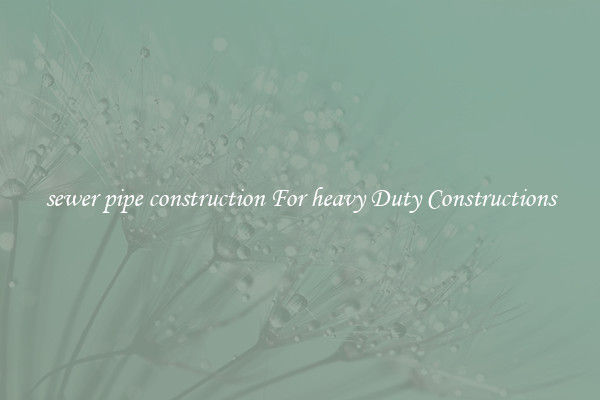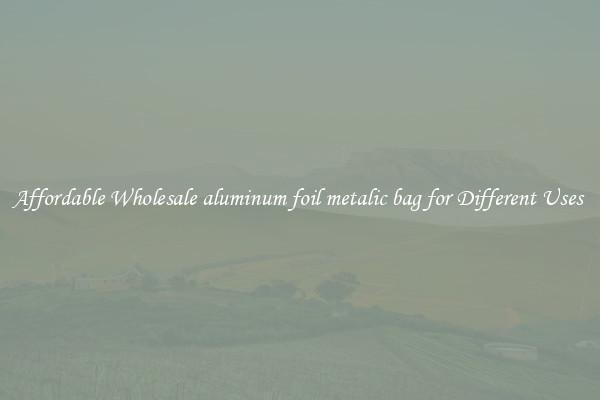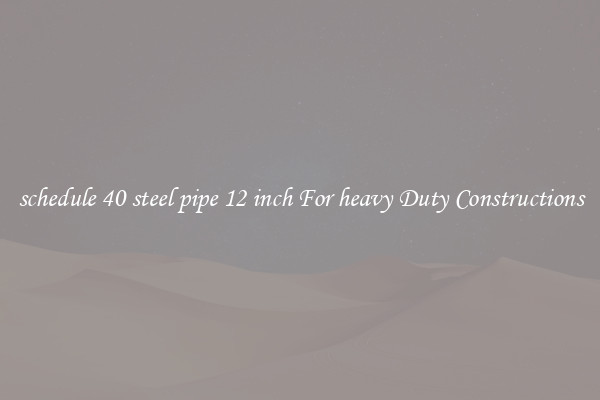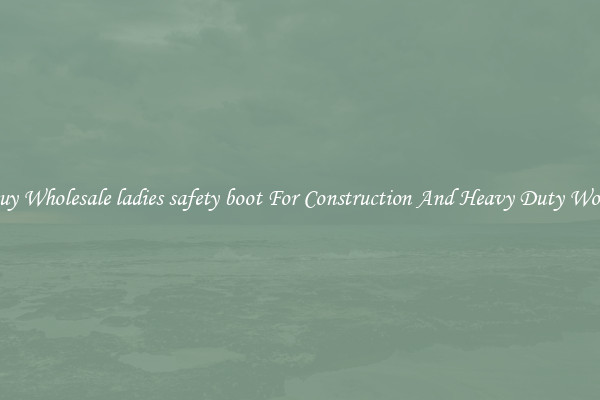sewer pipe construction For heavy Duty Constructions
Sewer Pipe Construction for Heavy-Duty Constructions

When it comes to heavy-duty constructions, such as industrial plants or large commercial buildings, proper sewer pipe construction is of utmost importance. These structures have high wastewater flow and require a robust plumbing system to ensure efficient and reliable drainage. Investing in high-quality sewer pipe materials and following best construction practices is crucial for the long-term functionality and durability of the sewage system.
One of the primary considerations in sewer pipe construction for heavy-duty constructions is the choice of pipe material. Cast iron, concrete, and PVC are the most commonly used materials in such applications due to their strength and corrosion resistance. Cast iron pipes are known for their durability and ability to withstand heavy loads, making them suitable for industrial environments. Concrete pipes, on the other hand, are often used in underground applications due to their excellent strength and long service life. PVC pipes are lightweight, cost-effective, and provide good resistance to chemicals and environmental factors.
The diameter of the sewer pipes is another critical factor in heavy-duty constructions. The large wastewater flow in these buildings necessitates the use of pipes with ample diameter to prevent clogging and backups. The size of the sewer pipes should be appropriately calculated, taking into account the estimated maximum volume of wastewater to be discharged per unit of time.
In heavy-duty constructions, the sewer pipe system should be designed with proper slope to ensure smooth flow and prevent the buildup of debris. A slope of at least 1/8 inch per foot is commonly recommended to maintain a self-cleaning velocity. This means that for every horizontal foot, the pipe should have a drop of at least 1/8 inch in elevation. A carefully planned sump system should also be included to handle excess water during heavy rainfall or flooding events.
Furthermore, heavy-duty sewer pipe construction should prioritize the use of high-quality fittings, connectors, and joint methods to ensure leak-free connections and prevent structural failures. Gasketed joints or bell and spigot joints provide strong and reliable connections that can withstand the pressure and stress of heavy wastewater flow.
Regular inspections and maintenance are essential for the longevity of the sewer pipe system in heavy-duty constructions. Frequent cleaning and removal of any accumulated debris will help prevent blockages and obstructions. Additionally, periodic inspections should be conducted to identify any signs of corrosion, cracks, or structural weaknesses. Timely repairs or replacements can prevent further damage and potential system failures.
In conclusion, proper sewer pipe construction for heavy-duty constructions is crucial for the efficient and reliable drainage of large volumes of wastewater. Choosing the right pipe material, ensuring an adequate diameter, designing with proper slope, using high-quality fittings, and performing regular maintenance are all vital components of a robust plumbing system. Investing in the quality of the sewer pipe construction will not only prevent costly repairs and downtime in the future but also ensure the safety and functionality of the entire infrastructure.

View details

View details

View details

View details








